Abstract
1. A short adaptation to sinusoidal flicker produces a temporary elevation in the temporal contrast threshold of a human observer.
2. The frequency specificity of this adaptation effect is much less than that observed with adaptation to spatial frequencies; thus it does not seem warranted to postulate the existence of distinct channels for the detection of specific temporal frequencies, as has been done in the case of spatial frequencies (Blakemore & Campbell, 1969).
3. At low frequencies, a substantial adapting modulation is necessary to produce an effect, but at high frequencies an effect can be seen even with adaptation which is below threshold (as determined by the method of adjustment).
4. This subthreshold adaptation appears to explain the observation that thresholds set by the method of adjustment rise by as much as a factor of two during the first minute of exposure.
5. No interocular transfer of the adaptation effect was observed.
6. Adaptation first appears at mesopic luminances, but its appearance is not dependent on the change from rod to cone vision. Under several conditions, however, the first appearance of flicker adaptation did coincide with a change in the deLange curve, which is attributable to the appearance of the antagonistic surround of visual receptive fields. Thus it was hypothesized that the surround is essential for adaptation.
Full text
PDF
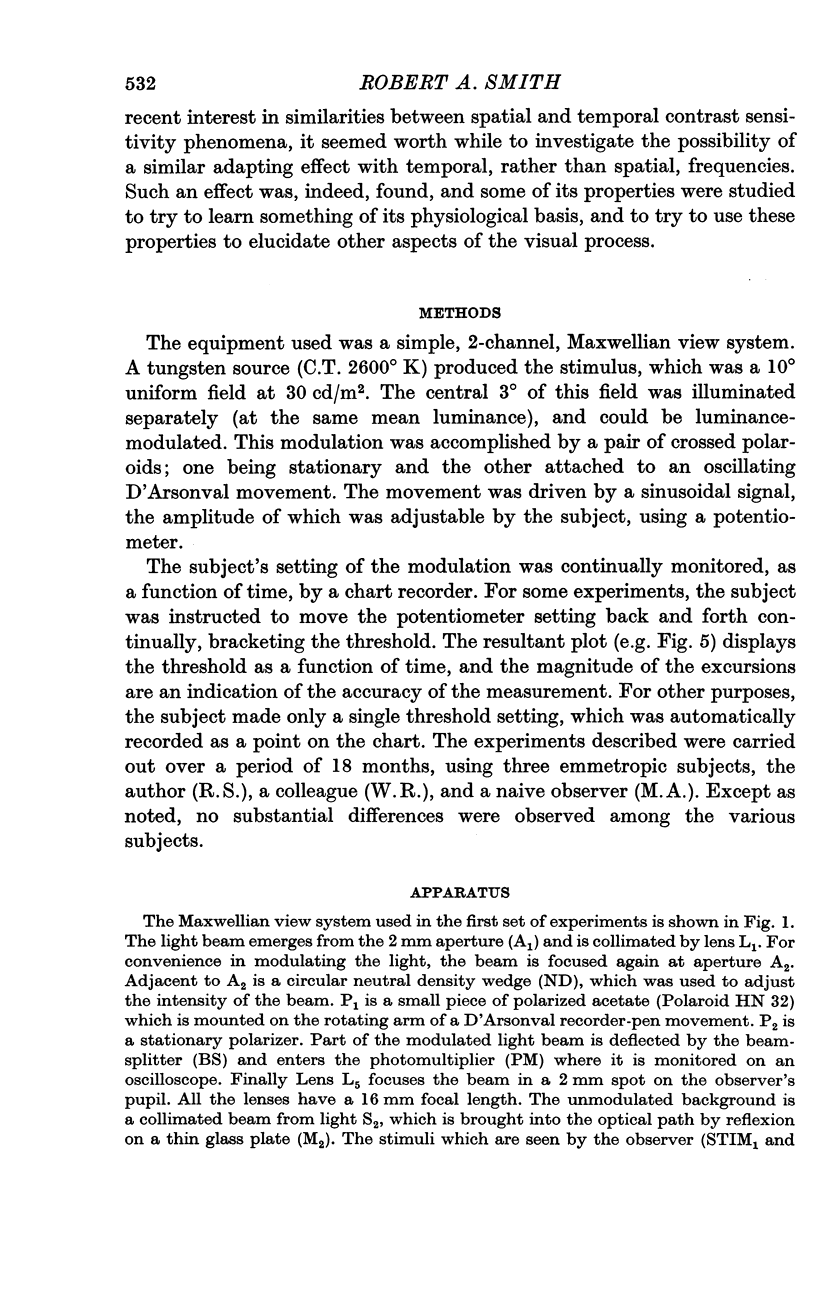
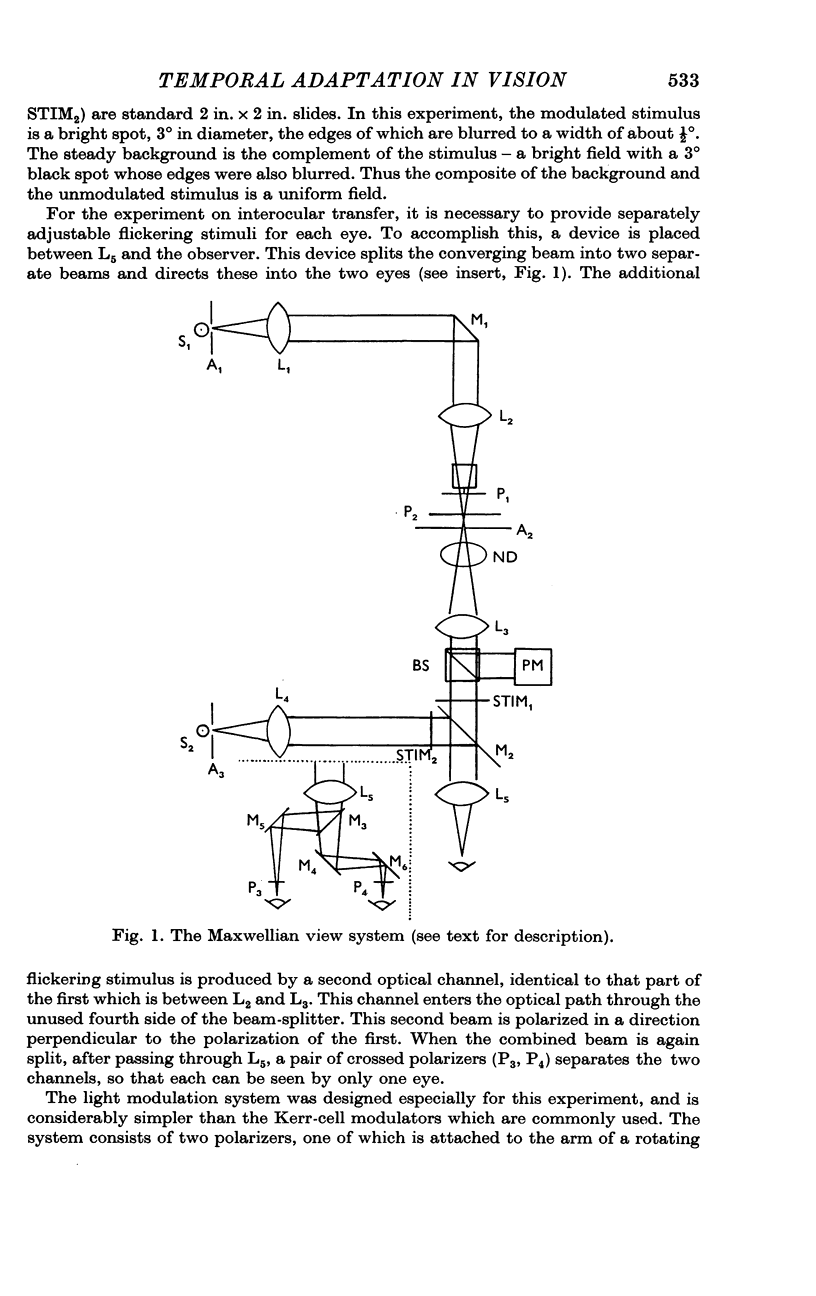
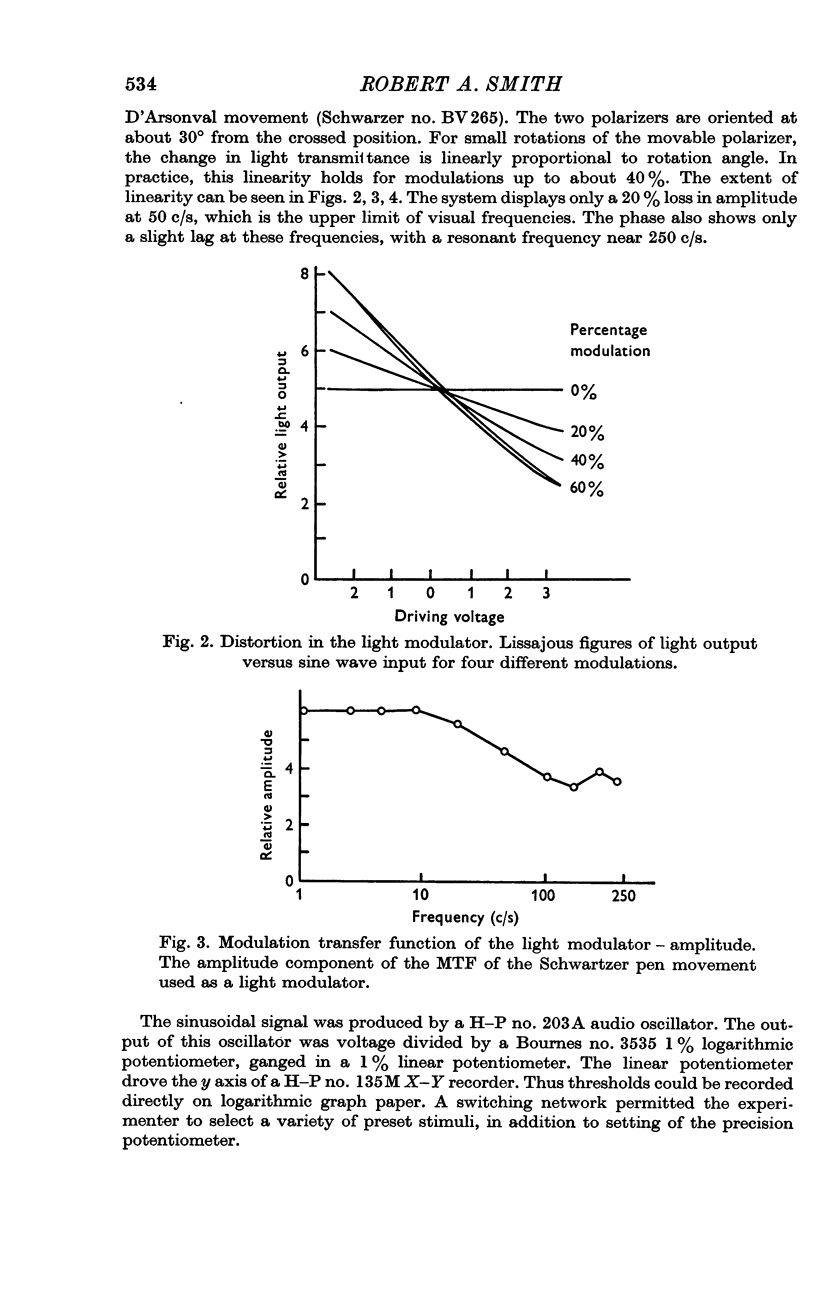
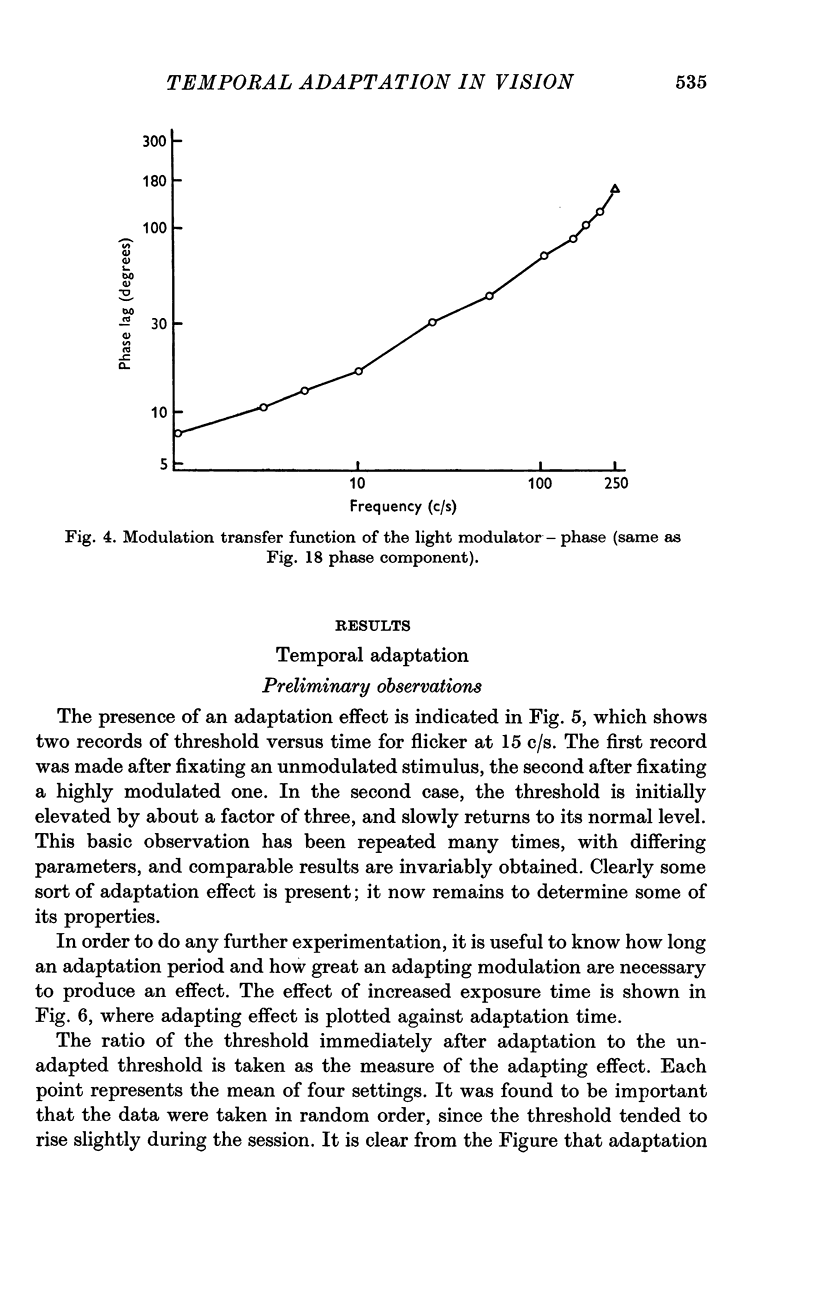
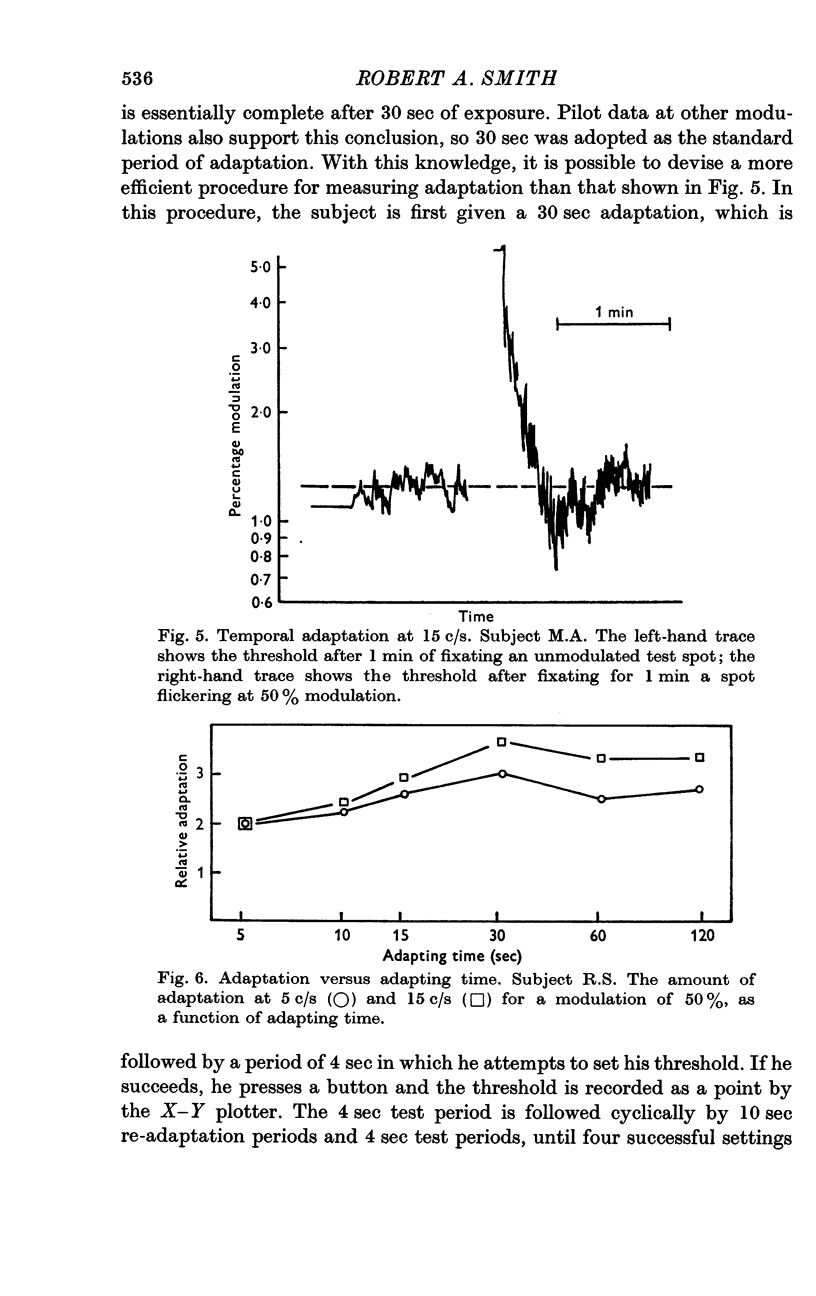
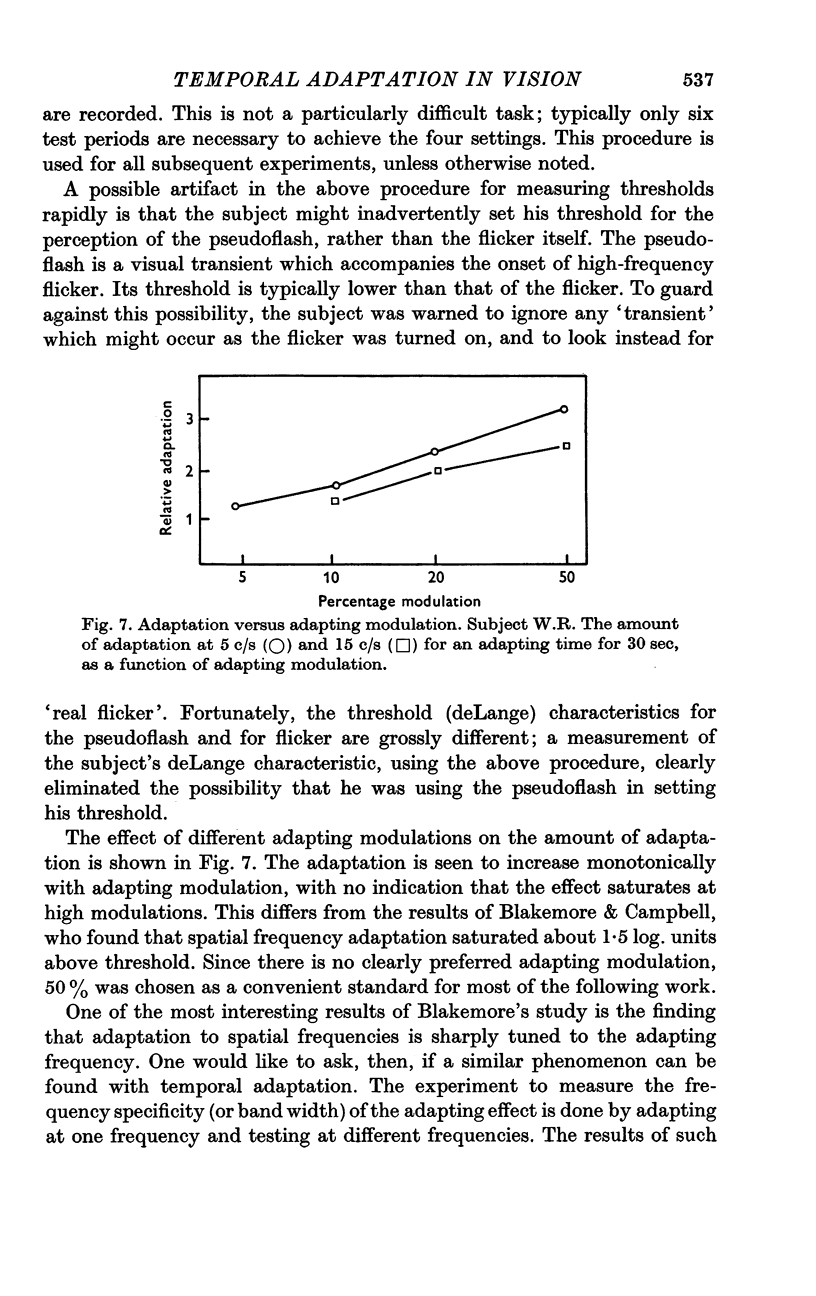
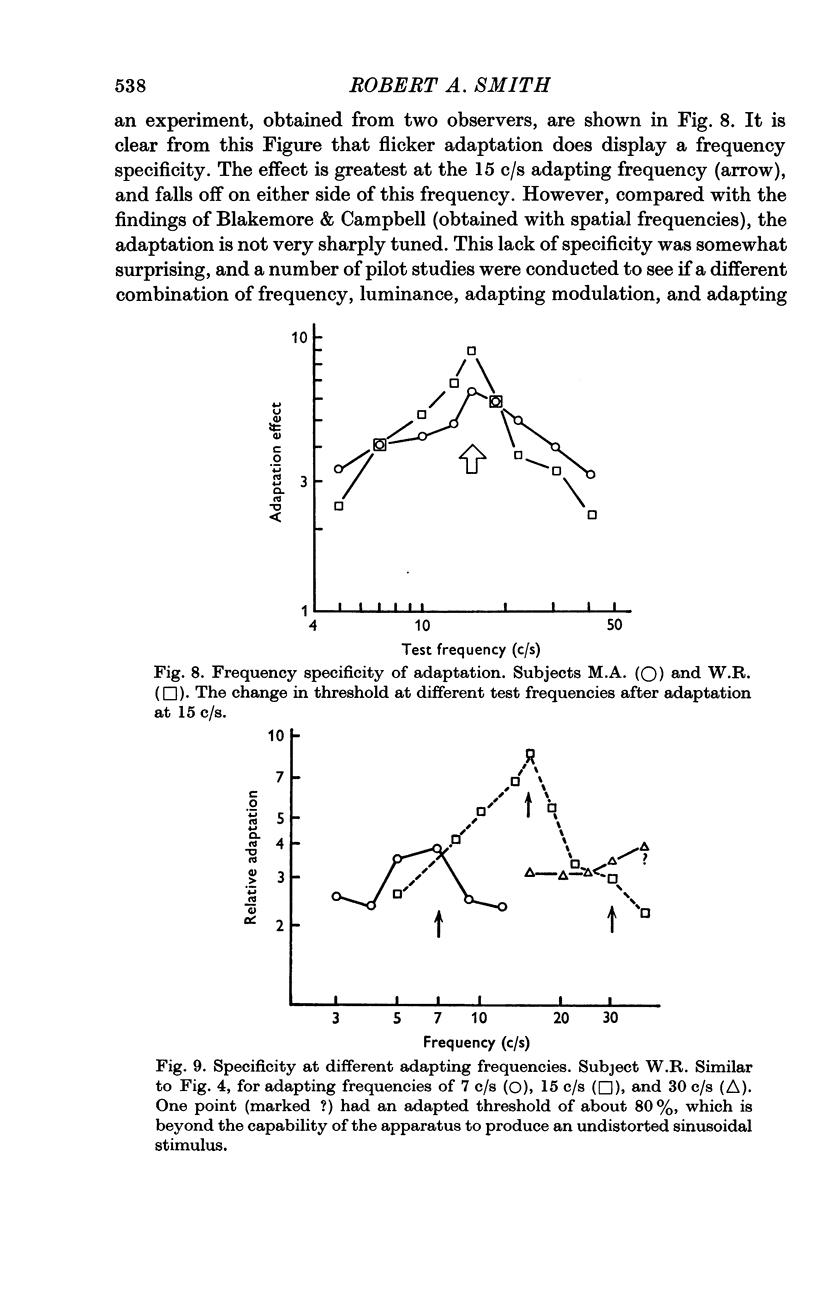

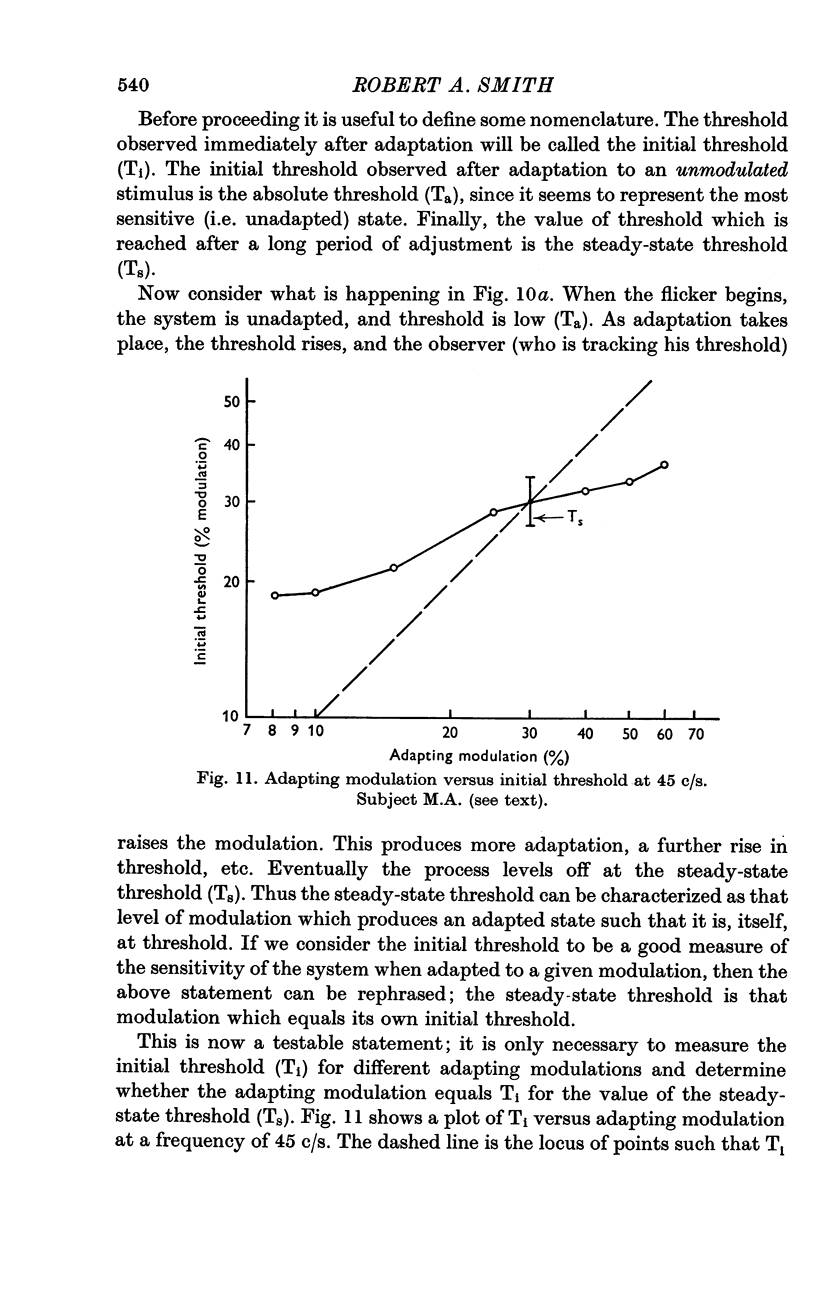
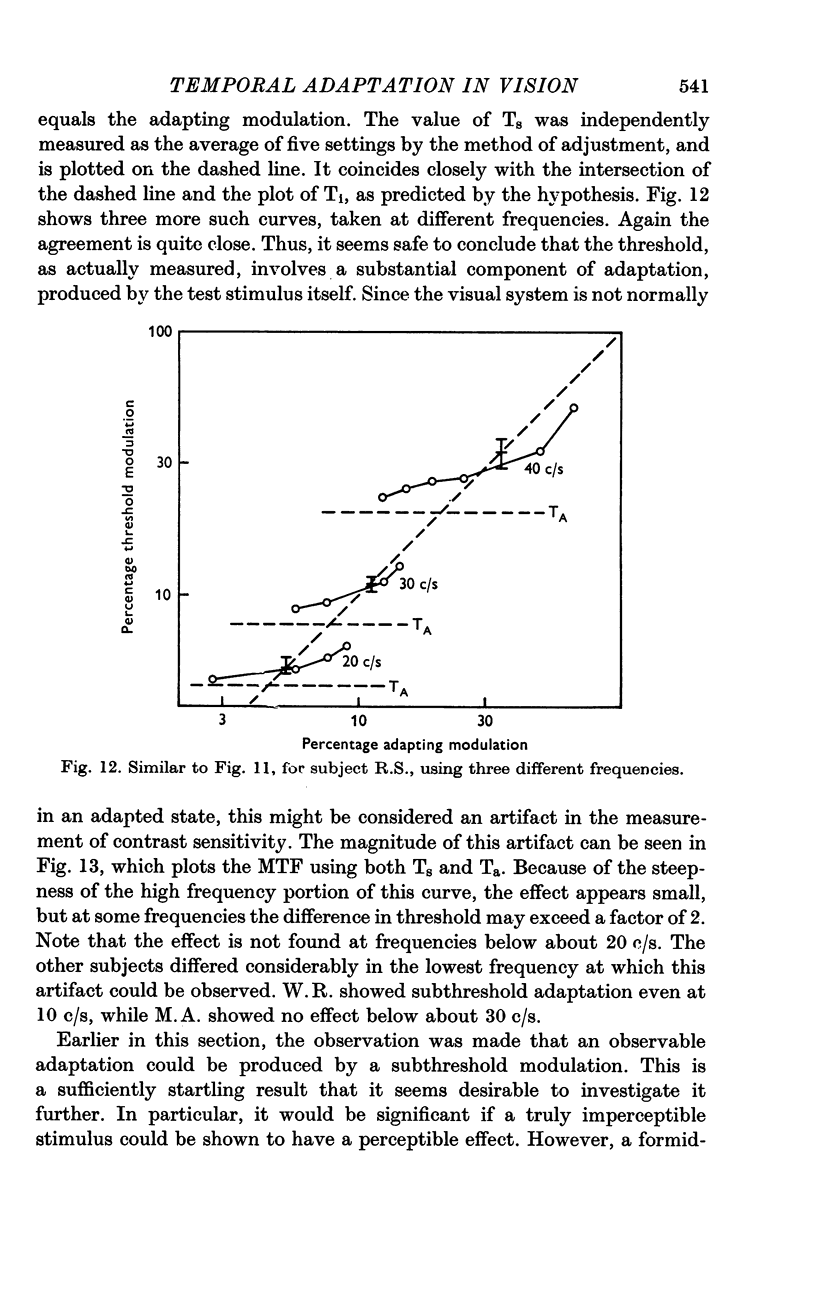
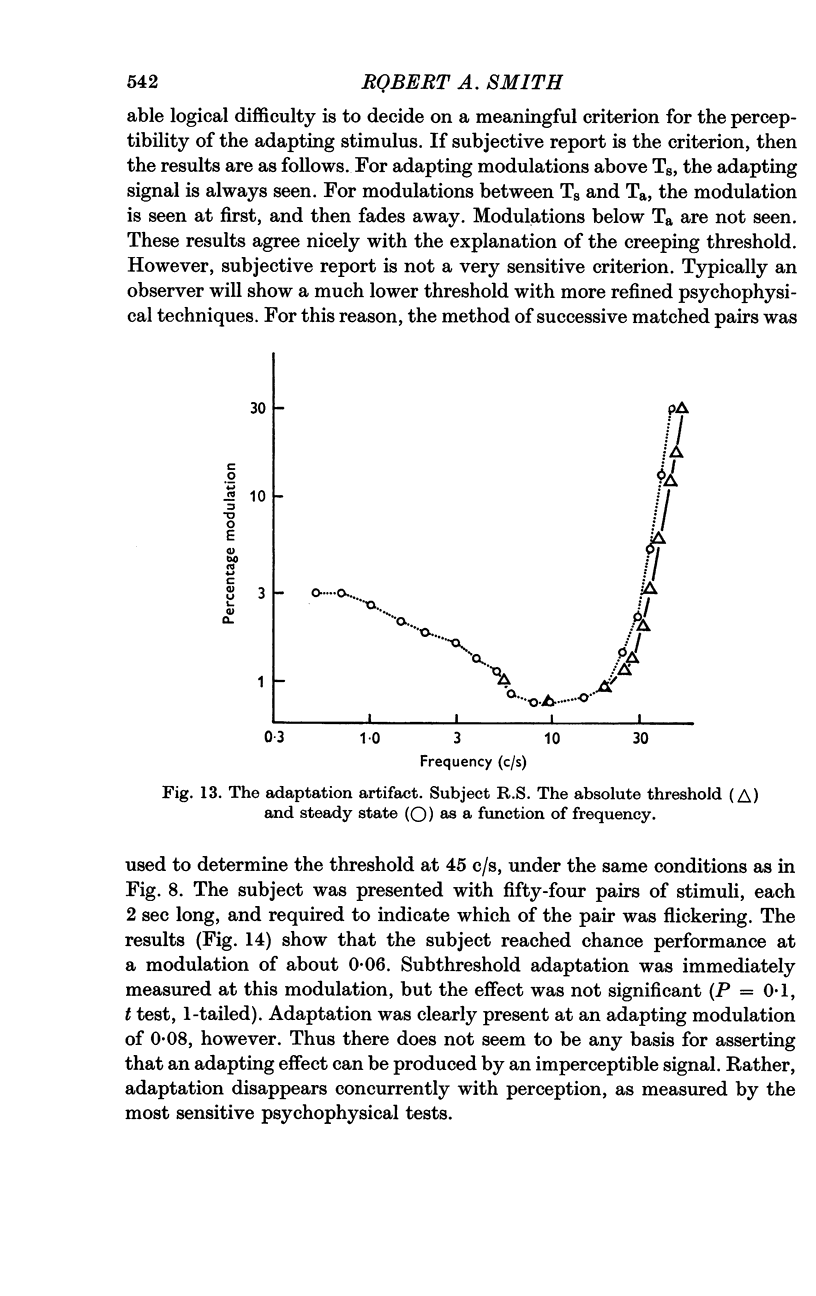

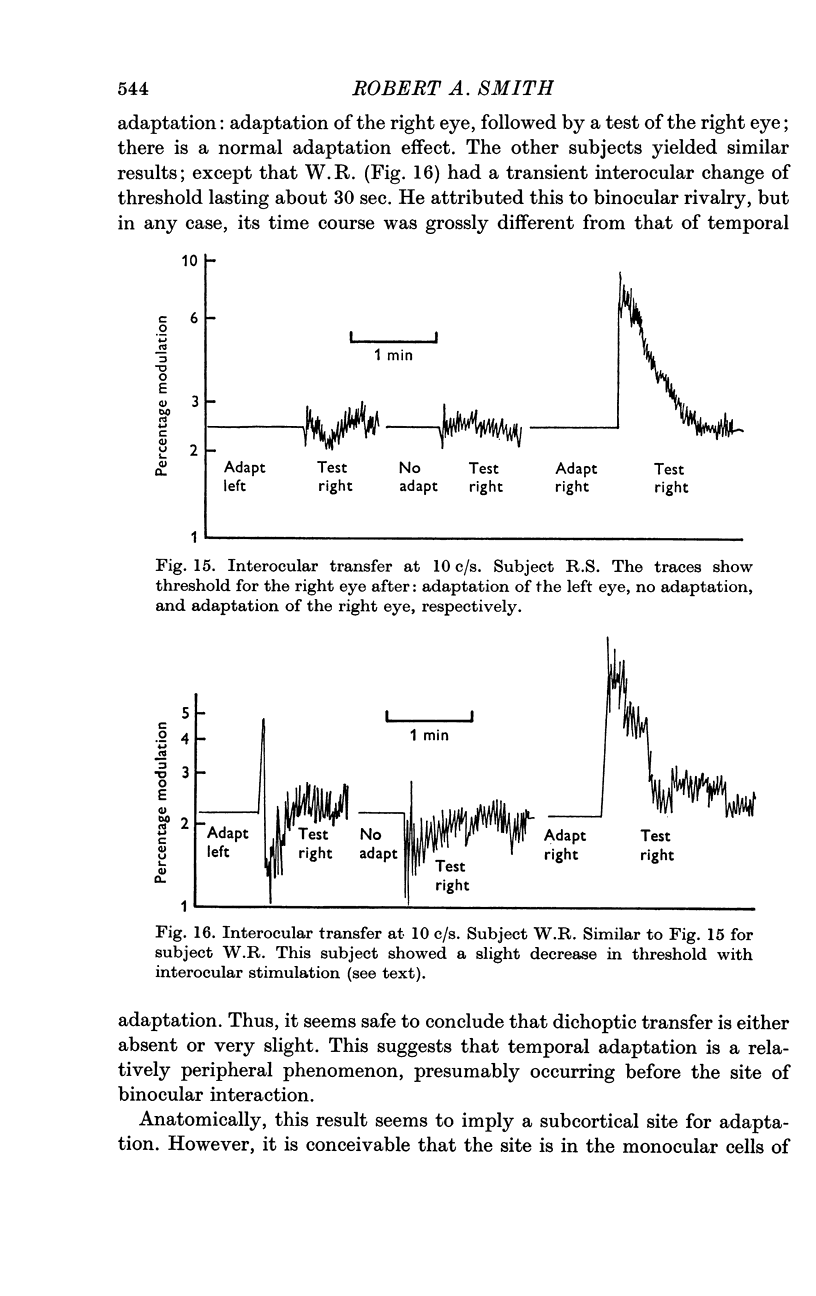
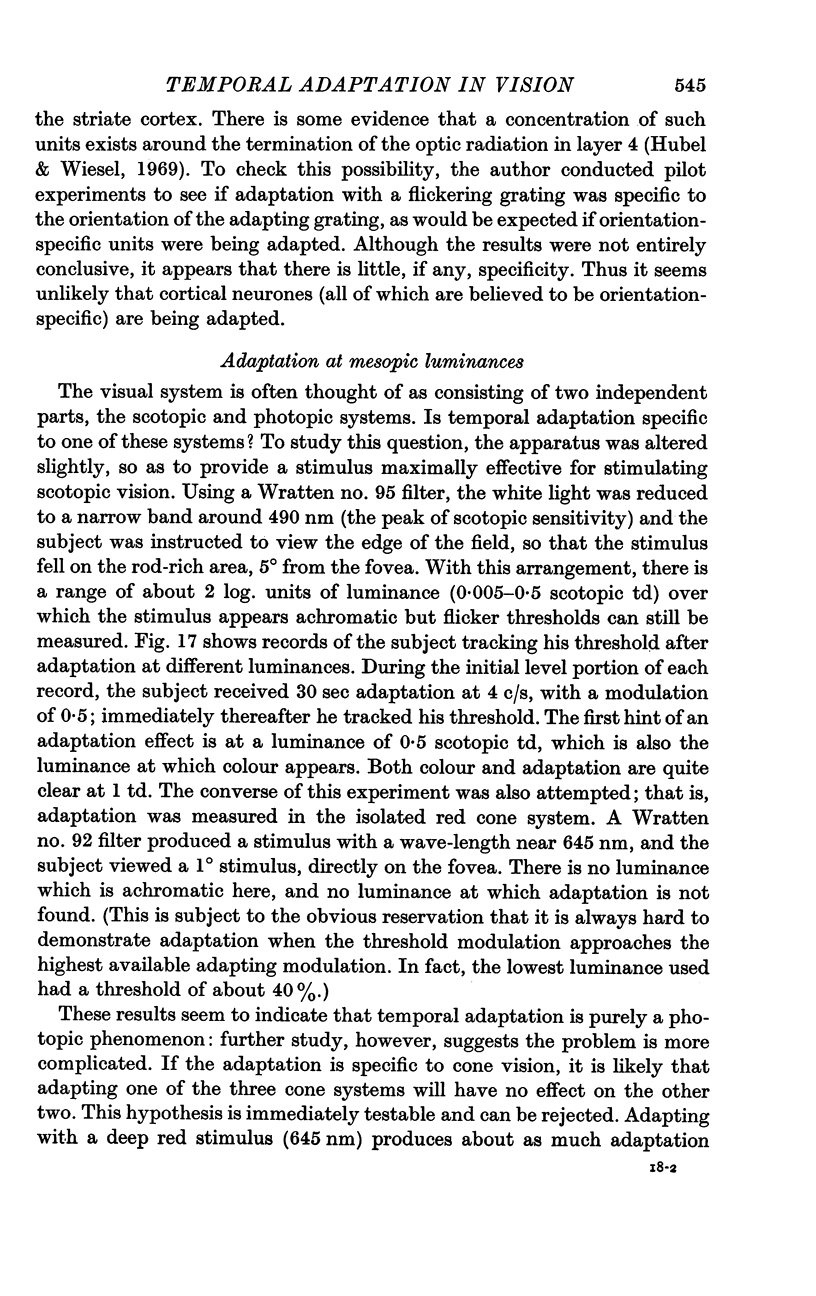


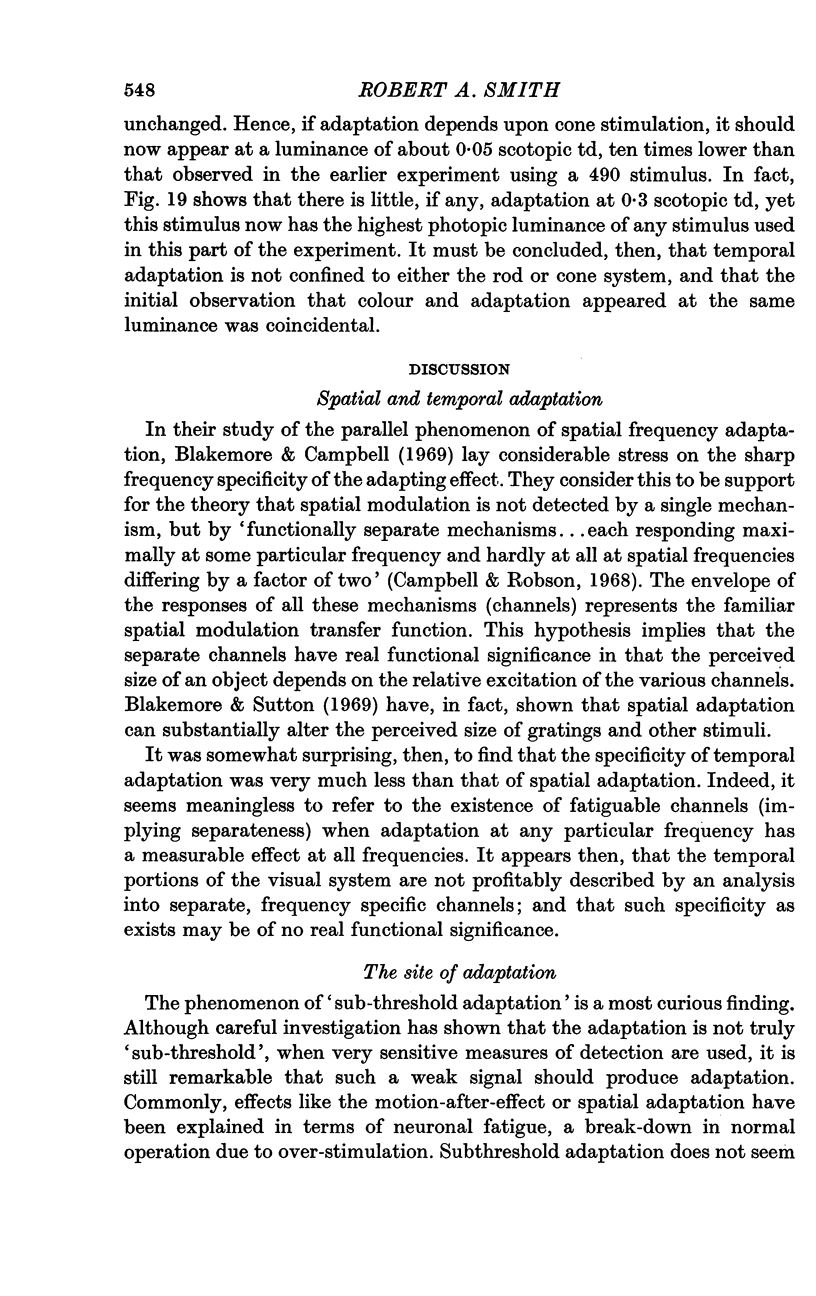


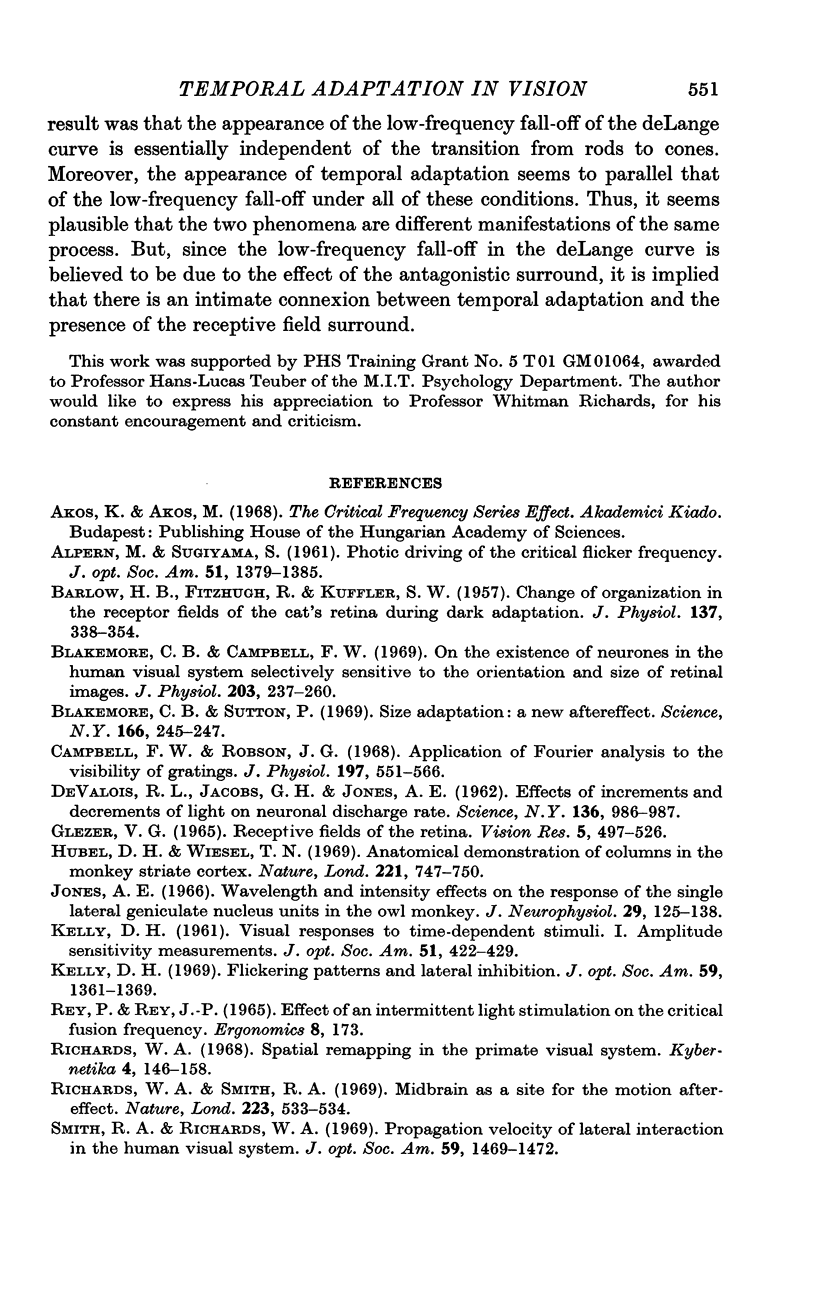
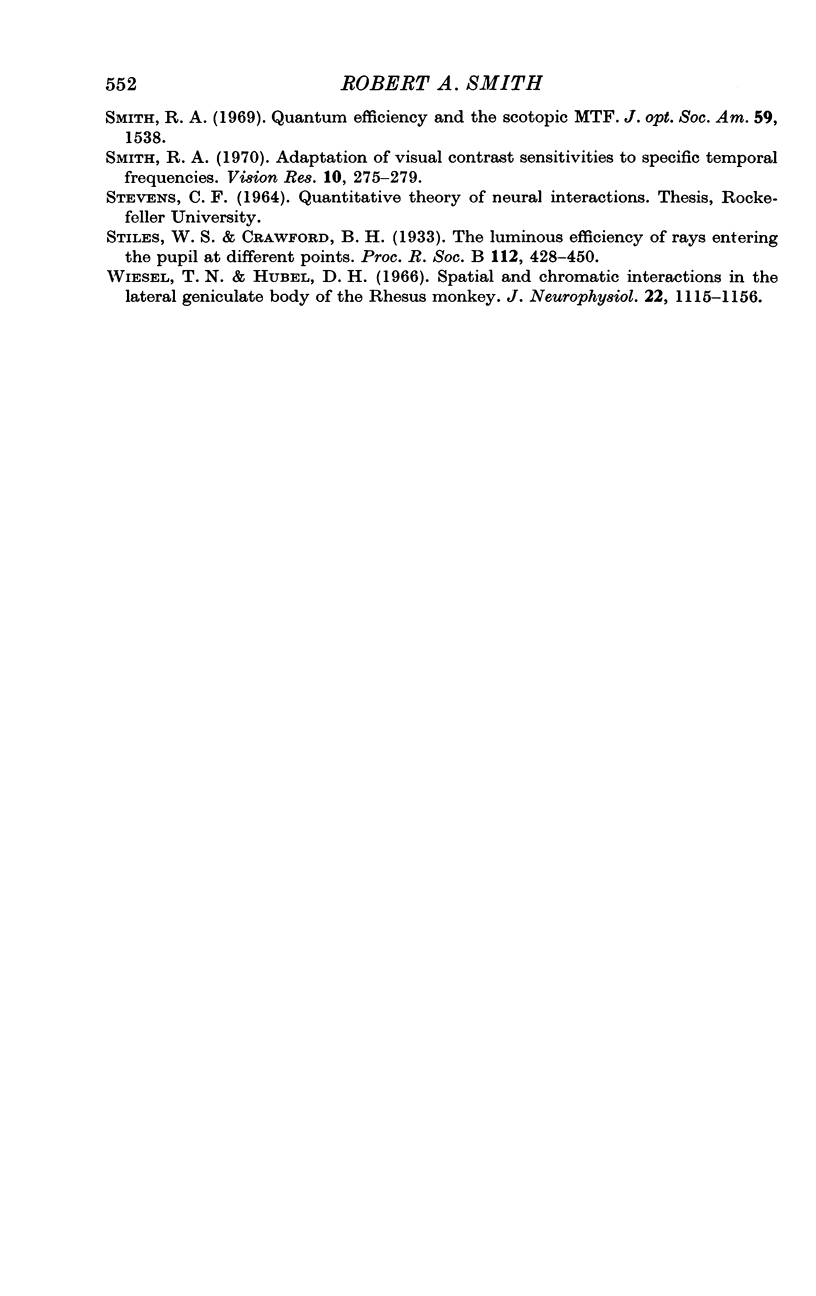
Selected References
These references are in PubMed. This may not be the complete list of references from this article.
- ALPERN M., SUGIYAMA S. Photic driving of the critical flicker frequency. Osaka City Med J. 1961 Dec;10:1379–1385. doi: 10.1364/josa.51.001379. [DOI] [PubMed] [Google Scholar]
- BARLOW H. B., FITZHUGH R., KUFFLER S. W. Change of organization in the receptive fields of the cat's retina during dark adaptation. J Physiol. 1957 Aug 6;137(3):338–354. doi: 10.1113/jphysiol.1957.sp005817. [DOI] [PMC free article] [PubMed] [Google Scholar]
- Blakemore C., Campbell F. W. On the existence of neurones in the human visual system selectively sensitive to the orientation and size of retinal images. J Physiol. 1969 Jul;203(1):237–260. doi: 10.1113/jphysiol.1969.sp008862. [DOI] [PMC free article] [PubMed] [Google Scholar]
- Blakemore C., Sutton P. Size adaptation: a new aftereffect. Science. 1969 Oct 10;166(3902):245–247. doi: 10.1126/science.166.3902.245. [DOI] [PubMed] [Google Scholar]
- Campbell F. W., Robson J. G. Application of Fourier analysis to the visibility of gratings. J Physiol. 1968 Aug;197(3):551–566. doi: 10.1113/jphysiol.1968.sp008574. [DOI] [PMC free article] [PubMed] [Google Scholar]
- De Valois R. L., Jacobs G. H., Jones A. E. Effects of Increments and Decrements of Light on Neural Discharge Rate. Science. 1962 Jun 15;136(3520):986–988. doi: 10.1126/science.136.3520.986. [DOI] [PubMed] [Google Scholar]
- Glezer V. D. The receptive fields of the retina. Vision Res. 1965 Oct;5(9):497–525. doi: 10.1016/0042-6989(65)90084-2. [DOI] [PubMed] [Google Scholar]
- Hubel D. H., Wiesel T. N. Anatomical demonstration of columns in the monkey striate cortex. Nature. 1969 Feb 22;221(5182):747–750. doi: 10.1038/221747a0. [DOI] [PubMed] [Google Scholar]
- Jones A. E. Wavelength and intensity effects on the response of single lateral geniculate nucleus units in the owl monkey. J Neurophysiol. 1966 Mar;29(2):125–138. doi: 10.1152/jn.1966.29.2.125. [DOI] [PubMed] [Google Scholar]
- KELLY D. H. Visual response to time-dependent stimuli. I. Amplitude sensitivity measurements. J Opt Soc Am. 1961 Apr;51:422–429. doi: 10.1364/josa.51.000422. [DOI] [PubMed] [Google Scholar]
- Richards W., Smith R. A. Midbrain as a site for the motion after-effect. Nature. 1969 Aug 2;223(5205):533–534. doi: 10.1038/223533a0. [DOI] [PubMed] [Google Scholar]
- Richards W. Spatial remapping in the primate visual system. Kybernetik. 1968 Apr;4(4):146–156. doi: 10.1007/BF00288548. [DOI] [PubMed] [Google Scholar]
- Smith R. A., Jr Adaptation of visual contrast sensitivity to specific temporal frequencies. Vision Res. 1970 Mar;10(3):275–279. doi: 10.1016/0042-6989(70)90132-x. [DOI] [PubMed] [Google Scholar]
- Smith R. A., Richards W. Propagation velocity of lateral interaction in the human visual system. J Opt Soc Am. 1969 Nov;59(11):1469–1472. doi: 10.1364/josa.59.001469. [DOI] [PubMed] [Google Scholar]
- Wiesel T. N., Hubel D. H. Spatial and chromatic interactions in the lateral geniculate body of the rhesus monkey. J Neurophysiol. 1966 Nov;29(6):1115–1156. doi: 10.1152/jn.1966.29.6.1115. [DOI] [PubMed] [Google Scholar]


